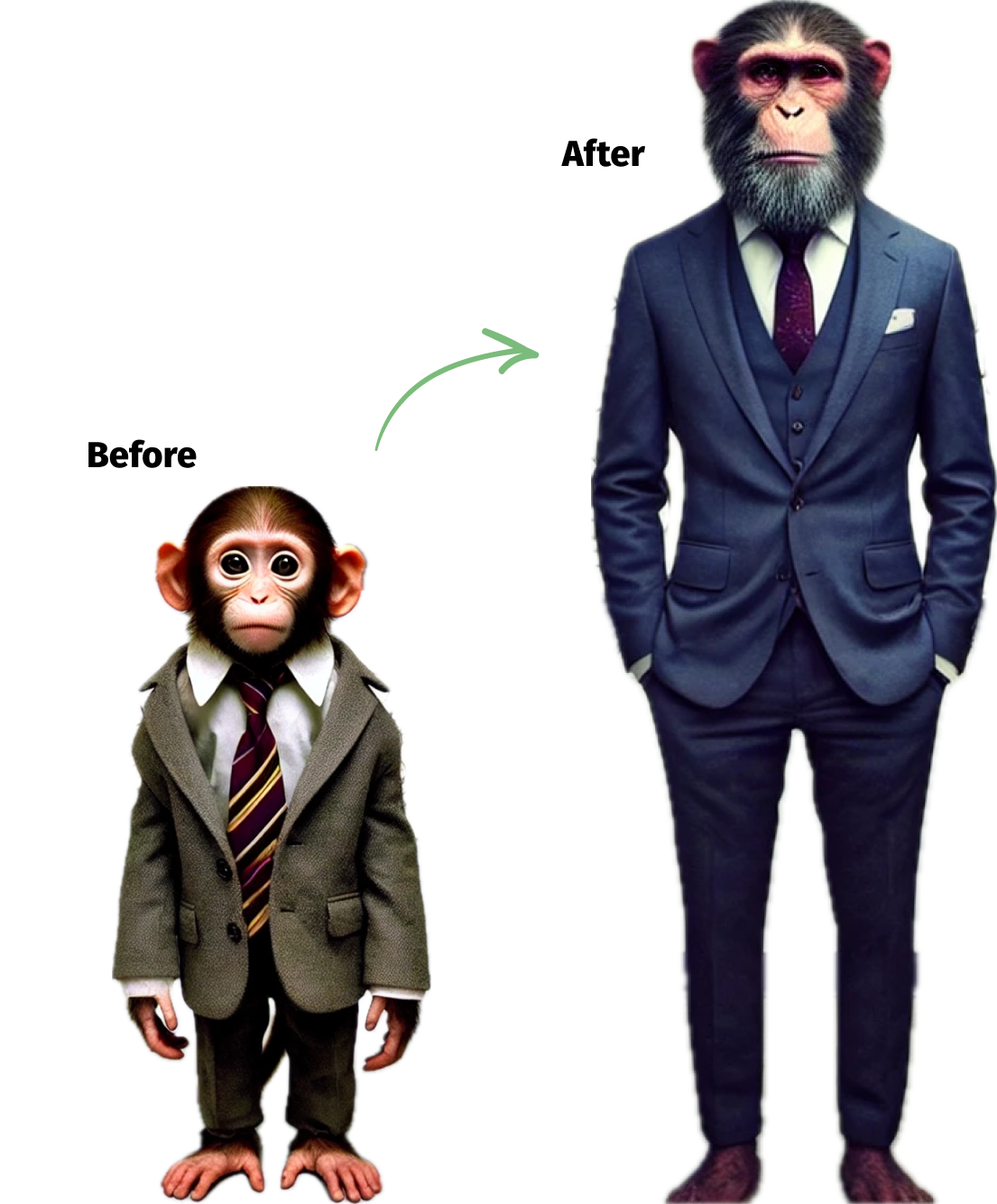🔒 Log in with your corporate email address.
read the short brief then click the ‘X‘ to start playing.
Responding is easy!
📝 Need to edit?
Hover over your message and click the ✏️ pencil icon to make changes.
🤝 Get expert feedback!
When ready, click the 🤝 handshake icon for personalised expert advice.
⚠️ Feedback is heavily redacted for non-paying clients to protect our intellectual property.
We will contact you ASAP

The Monkey is one of the vivid images we use in our training to make a key concept memorable. This image in particular has become a totem for our firm: a toy monkey attends every course, and the BBC made a documentary about us titled The Monkey Man.
A “monkey on your back” is a problem you have – in negotiation terms, that makes you want a deal even on bad terms. E.g. you’re under time pressure / you don’t have any other offers / you think the quality of the other offers is poor.
Monkeys lead most negotiators to underestimate their own relative power and so negotiate too ‘chicken’. And there is a structural reason for this error. – When you look at your own situation you are only too aware of your own monkeys. But the other party may not be aware of these factors.• At the same time, the other guy has problems too – and he isn’t going to tell you about the monkeys on his back as this would only weaken his position. • So you have a distorted view of the power balance. It’s distorted because you have taken account of all your monkeys, but have not allowed for the monkeys he almost certainly has on his back – because you don’t know about those. And the distortion is always in the same direction: it always leads you to underestimate your own power.